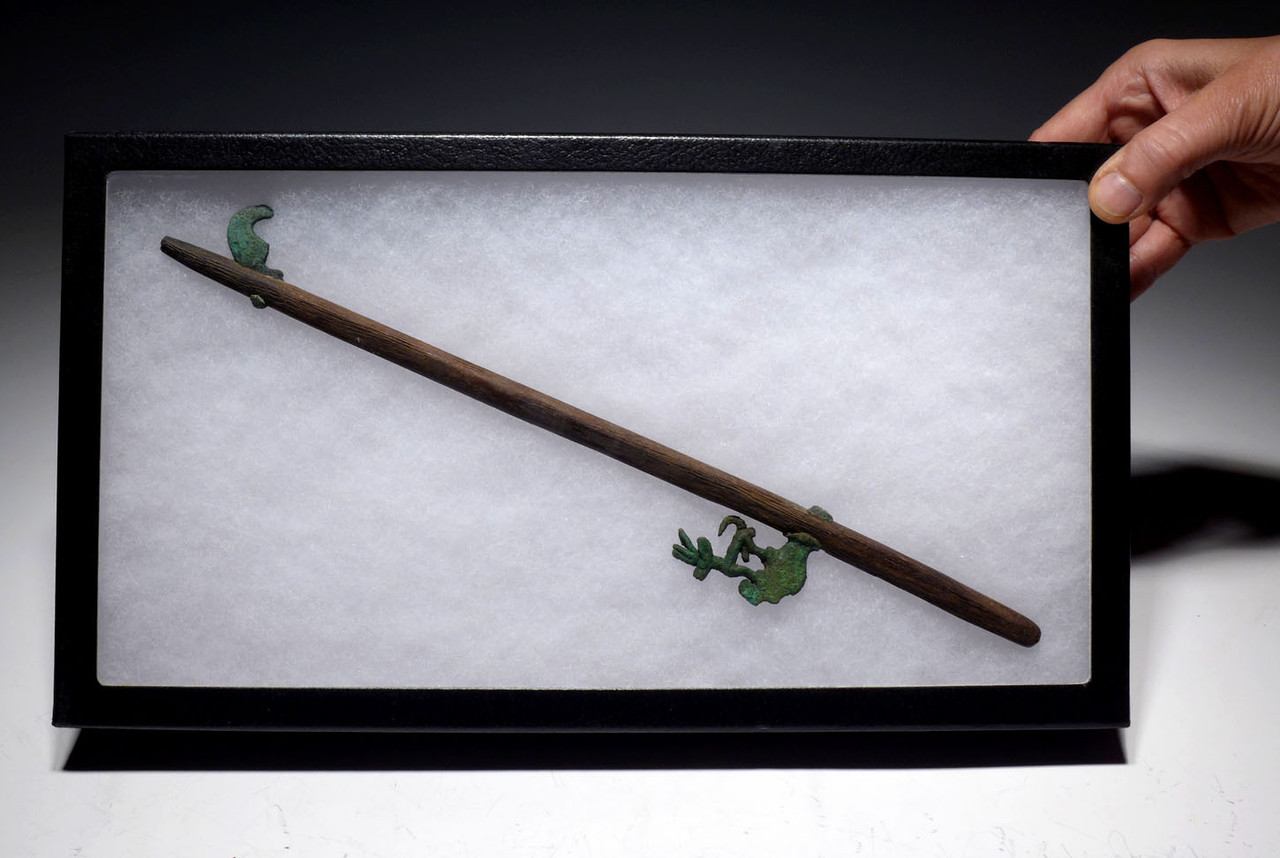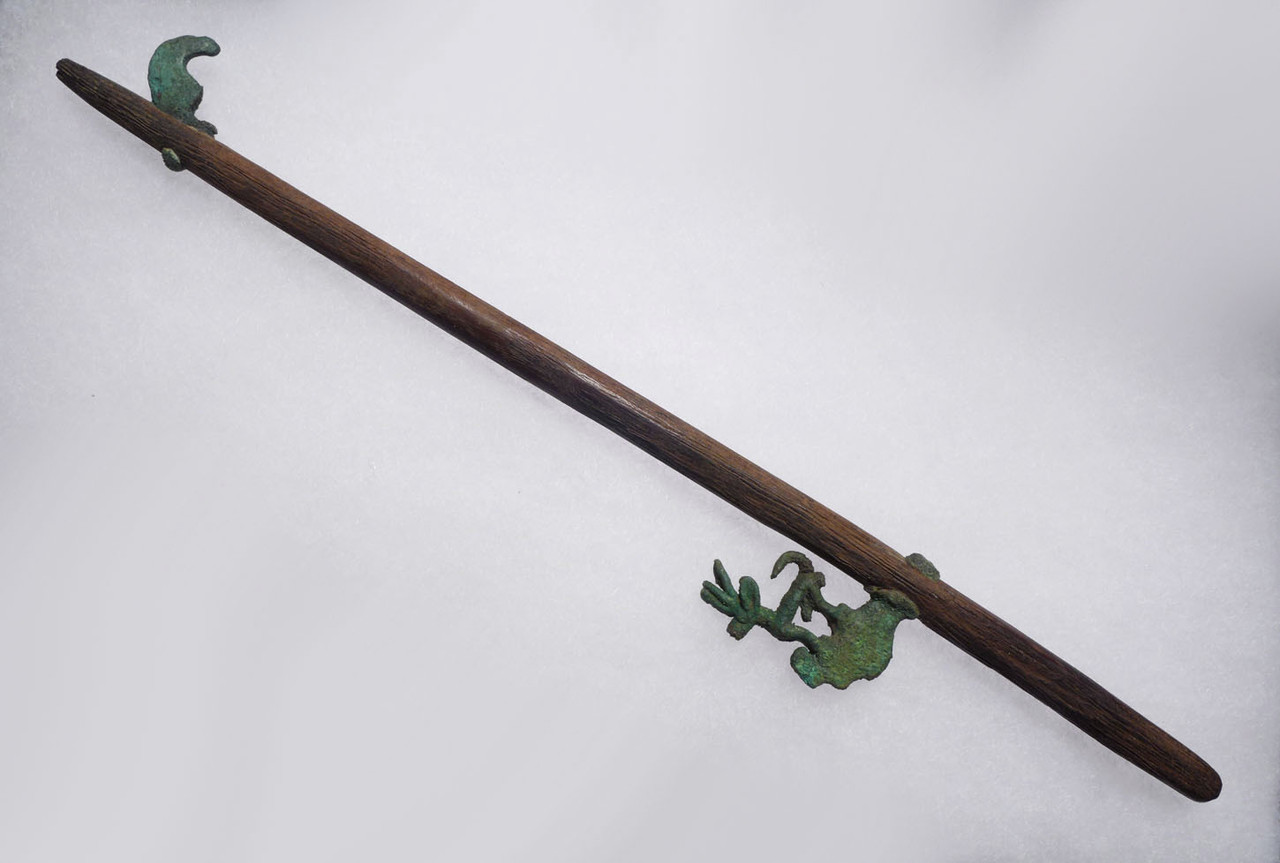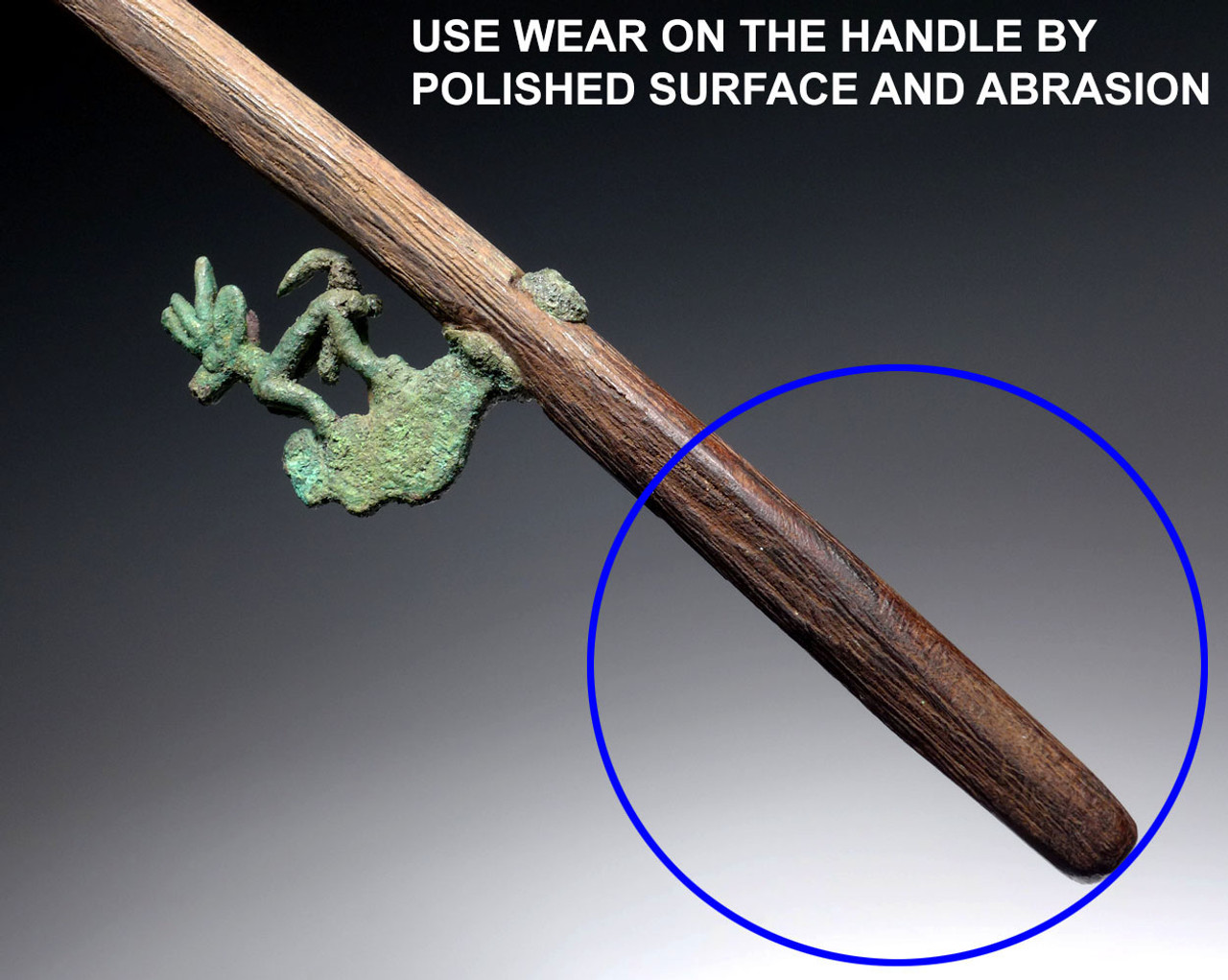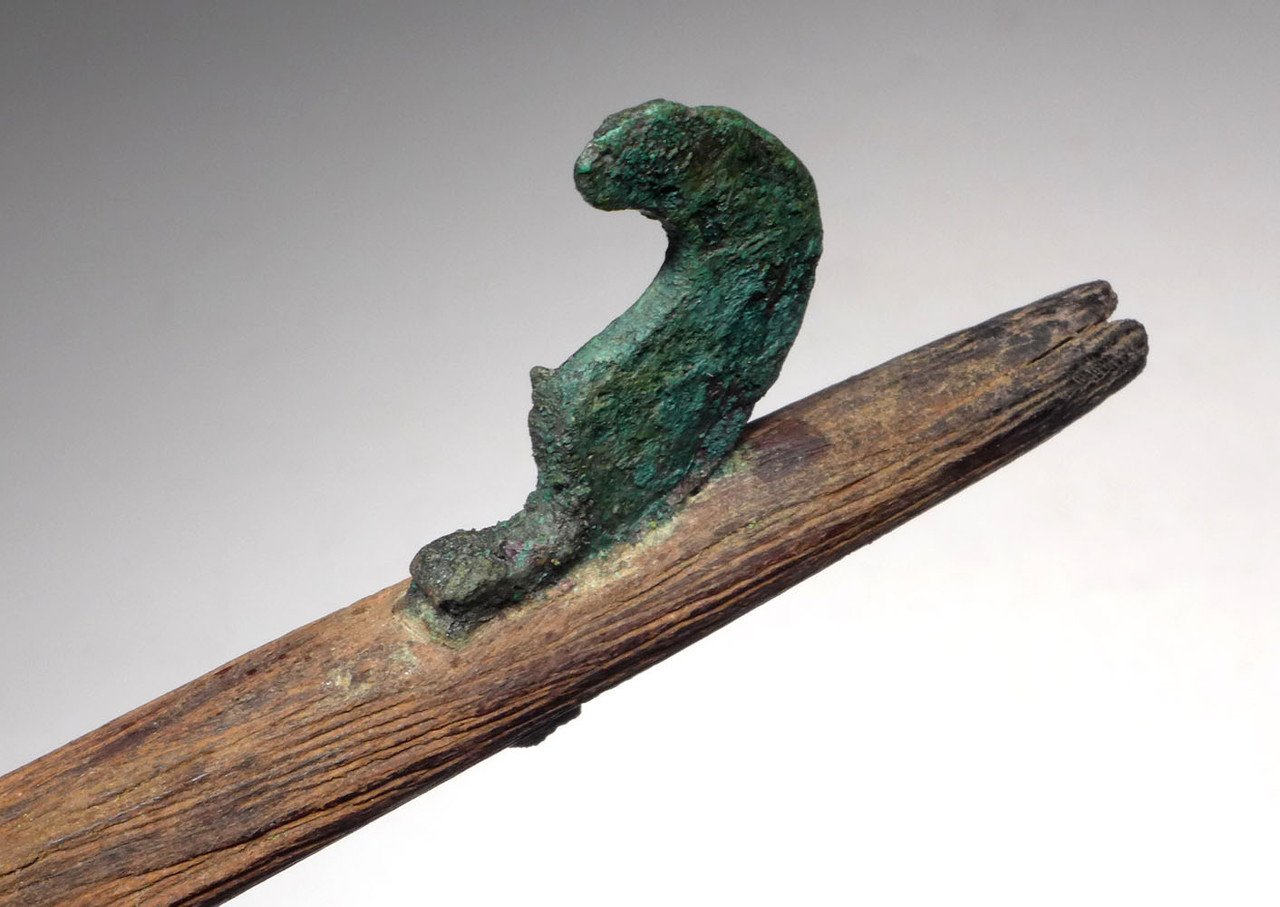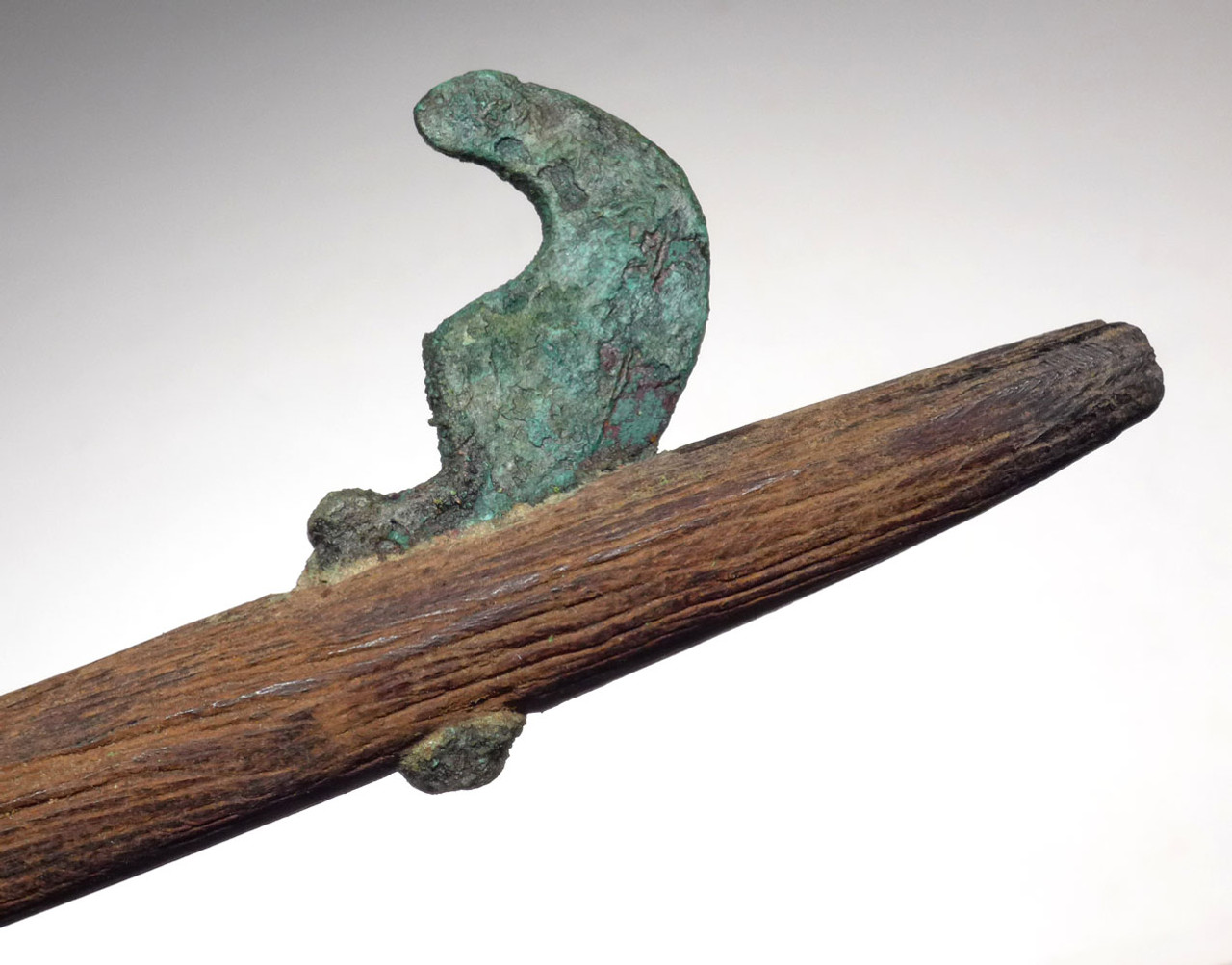Product Description
SEE MORE PRE-COLUMBIAN ARTIFACTS
This is a VERY RARE ancient COMPLETELY ORIGINAL wood and copper atlatl spear thrower of the ancient Pre-Columbian Moche Indians of South America. Preserved ancient wood is extremely rare and COMPLETE weapons that were made of wood, even more rare. This spectacular example is of reduced size so was likely used by a youth. Use wear is evident on the handle portion indicating this was not simply a votive burial piece. The wooden shaft is complete and unbroken. A copper hook and copper figural deer with phallus deity handle are attached to the shaft by copper rivet that protrudes the opposite side. Where these copper parts meet the wood, you can see ancient sediment deposits in the tiny crevices of the joints. The copper has ancient deposits on all surfaces, as well. Microscopic examination of the micro-crevices of the wood also show deeply impacted ancient deposits - something impossible to replicate if the wood was a modern copy. While organic materials such as wood rarely survives from ancient times, many of the portions of western South America that were occupied by Pre-Columbian cultures, rank as the driest regions on our planet. This is how objects such as ancient wood and fibers have survived, as well as intact mummies of those buried long ago.
Objects like this atlatl spear thrower were strictly reserved for only the wealthiest elites of society. While the Moche are famous for their ceramics, it is their metal craft that is increasingly of interest as the skill required to create these objects is perhaps some of the finest the world has ever known. Many of the ancient Moche techniques are still difficult today for modern metalsmiths to duplicate!
The atlatl or spear (dart) thrower, was a weapon used to hurl darts with greater force and from greater range than they could be thrown by hand. The "darts" launched from an atlatl were more like big arrows about 5.9 feet long, and tipped with obsidian, chert, bone or copper projectile points. The South American Pre-Columbian atlatl had a wooden body with a hook that was made of stone or metal. The length of a common atlatl was about 50 cm. Atlatl handles were commonly carved and modeled to represent both, real world animals and deities. The atlatl was used both, in hunting and warfare.
In Pre-Columbian South America, the atlatl was an important part of life, hunting, and religion. The earliest known spear-thrower of the South Americas had a proximal handle piece. The atlatl is best known archaeologically from Nazca culture and the Inca civilization, but the earliest examples are known from associations with Chinchorro mummies. The atlatl is also known from Moche culture, including detailed respresentations on painted pottery, and in representations on textiles of the Wari culture.
HISTORY
The Moche civilization, or the Mochica culture, flourished in northern Peru with its capital near present-day Moche, Trujillo, Peru. They thrived from about 100 to 700 AD during the Regional Development Epoch. Moche society was agriculturally based, with a significant level of investment in the construction of a sophisticated network of irrigation canals for the diversion of river water to supply their crops. The Moche are particularly noted for their elaborately painted ceramics, gold work, monumental constructions (huacas), and irrigation systems.
Both iconography and the finds of human skeletons in ritual contexts seem to indicate that human sacrifice played a significant part in Moche religious practices. These rites appear to have involved the elite as key actors in a spectacle of costumed participants, monumental settings and possibly the ritual consumption of blood. The tumi was a crescent-shaped metal knife used in sacrifices. Excavations in plazas near Moche huacas have found groups of people sacrificed together and the skeletons of young men deliberately excavated, perhaps for temple displays.
The Moche may have also held and tortured the victims for several weeks before sacrificing them, with the intent of deliberately drawing blood. Some parts of the victims may have been eaten in ritual cannibalism. The sacrifices may have been associated with rites of ancestral renewal and agricultural fertility. Moche iconography features a figure which scholars have nicknamed the "Decapitator"; it is frequently depicted as a spider, but sometimes as a winged creature or a sea monster: together all three features symbolize land, water and air. When the body is included, the figure is usually shown with one arm holding a knife and another holding a severed head by the hair; it has also been depicted as "a human figure with a tiger's mouth and snarling fangs". The "Decapitator" is thought to have figured prominently in the beliefs surrounding the practice of sacrifice.
 US DOLLAR
US DOLLAR
 EURO
EURO
 AUSTRALIAN DOLLAR
AUSTRALIAN DOLLAR
 CANADIAN DOLLAR
CANADIAN DOLLAR
 POUND STERLING
POUND STERLING

